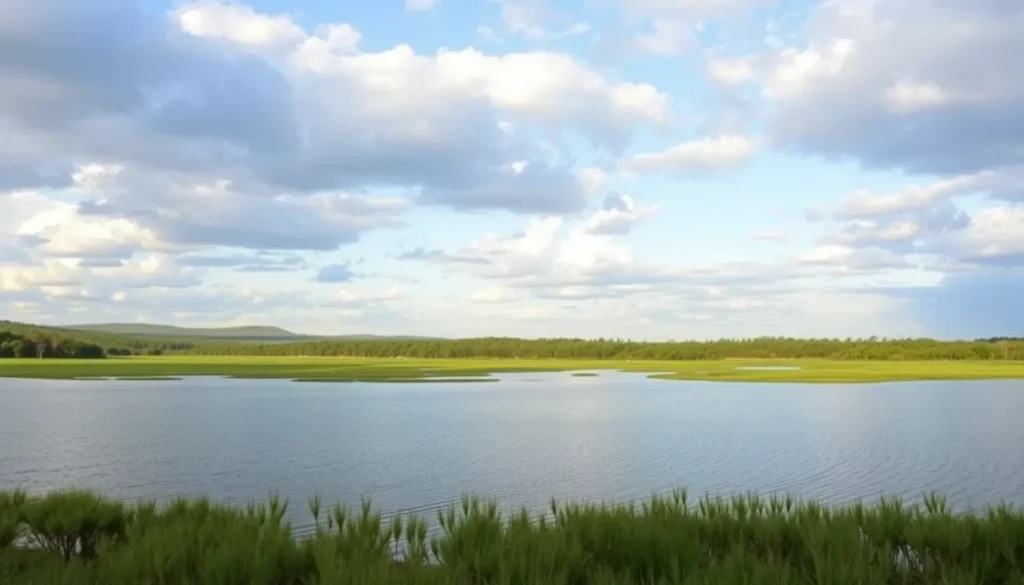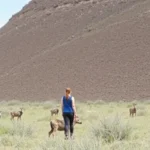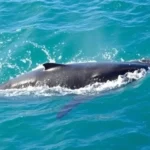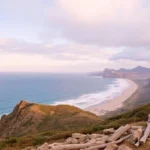Guide to Visiting iSimangaliso Park in South Africa

Visiting one of South Africa's natural gems can be an unforgettable experience that deeply connects you with nature. The iSimangaliso Wetland Park, a UNESCO World Heritage site, offers an incredible diversity of ecosystems and wildlife that will leave you in awe. If you're considering a visit, this guide will provide you with all the essential information to make the most of your time in this breathtaking location.
⭐ Don't forget to check out our article on what to do in St. Lucia and the hippo tour.
Where is iSimangaliso Wetland Park located?
Nestled in the northeastern corner of South Africa, just north of St. Lucia, the iSimangaliso Wetland Park extends along the coastline, bordering Mozambique and Eswatini. As the third largest protected area in South Africa, its management is unique, being overseen by a private entity, which has been crucial for its conservation amid various governmental challenges.
The name "iSimangaliso" translates to "miracle" or "wonder" in Zulu, aptly reflecting the park's stunning natural beauty. It was designated as the first UNESCO World Heritage site in South Africa in 1999, recognized for its unique ecosystems and biodiversity.
iSimangaliso is comprised of a range of ecosystems, including:
- Lakes, wetlands, and estuaries teeming with migratory birds, crocodiles, and hippos.
- Coastal forests and savanna housing diverse wildlife such as monkeys, antelopes, rhinoceroses, zebras, giraffes, and even leopards, along with numerous endemic plant species.
- Sandy dunes and expansive beaches where only lizards, beetles, and drought-resistant plants thrive.
- Marine area featuring a protected stretch of the Indian Ocean with coral reefs and vibrant marine life, ideal for snorkeling and diving, especially during favorable conditions.
With such a rich tapestry of environments, a visit to iSimangaliso is not just a getaway; it’s a chance to immerse yourself entirely in nature.
How to reach iSimangaliso Wetland Park
Covering about 3,280 km2, much of iSimangaliso is not accessible to the average tourist. The park is divided into sections, each with different entrances. If you’re coming from St. Lucia, you can easily travel along the coastal road leading to Cape Vidal, approximately 30 km away. This area is known as the "Eastern Shores" and is a popular route for visitors.
Alternatively, you can explore the "Western Shores," which includes areas like Charters Creek and Fani’s Island, or reach "False Bay".
To the north, several other areas are part of the park, such as "uMkhuze," where you can embark on safaris to see the Big 5, and "Sodwana Bay," a hotspot for snorkeling and diving. Other remote areas like "Lake Sibaya," "Coastal Forest," and "Kosi Bay" are less accessible and require more time to explore.
Entry fees for iSimangaliso Wetland Park
It’s important to note that iSimangaliso is not managed by SanParks, so the Wild Card is not valid here. Expect to pay an entry fee that varies by section. If you plan to visit multiple areas, you will need to pay several times.
The current fees for international visitors are as follows (please add 7 ZAR per person for taxes):
| Section | Adult | Child | Car |
|---|---|---|---|
| Eastern Shores | 118 ZAR | 86 ZAR | 70 ZAR |
| uMkhuze | 118 ZAR | 86 ZAR | 70 ZAR |
| Western Shores | 118 ZAR | 86 ZAR | 70 ZAR |
| False Bay | 108 ZAR | 64 ZAR | 27 ZAR |
| Sodwana Bay | 64 ZAR | 44 ZAR | 38 ZAR |
| Coastal Forest | 64 ZAR | 44 ZAR | 38 ZAR |
| Kosi Bay | 130 ZAR | 64 ZAR | 65 ZAR |
For two adults visiting the Eastern Shores section, we ended up paying a total of 320 ZAR (around 16€).
You can pay with cash or card, and upon entry, you will receive a map. We tried to gather some information from the staff, but unfortunately, the person who helped us wasn’t very informative. Fortunately, we had researched key points to explore the night before, so we were ready to make the most of our visit!
What to see in iSimangaliso Wetland Park
This guide focuses on the southern section of iSimangaliso Wetland Park, which we explored from St. Lucia in a single day, managing to see nearly all its main attractions:
1. Mission Rock Beach
Mission Rock Beach is a wild beach where we stopped briefly to take photos, though the rough sea and wind made it less inviting for a swim. Some visitors were fishing or enjoying a beach day. This spot is a prime location for whale-watching during the season (June to November), so don’t forget your binoculars!
There’s a viewpoint accessed by a trail through the bush, which offers nearly 360° views, although they are not particularly spectacular.
Fun fact: we were delayed for about half an hour on the main road because a herd of elephants was munching away on the roadside. You know how it goes—animals always have the right of way!
2. Kumfazana Hide
Just a short distance away is the Kumfazana Hide, a spot we found quite enjoyable. These "hides" are structures designed for discreet wildlife observation in their natural habitats. They are strategically placed in areas with frequent animal activity.
This particular hide overlooks a small lagoon, and while we spotted a few birds and some hippos in the distance, we didn’t have much luck that day. But soon, things would change!
3. Kwasheleni Viewpoint and Dune Loop
Recommended as the best viewpoint for panoramic vistas in the park, we imagined it might be similar to the previous one and didn’t want to spend too much time here. To reach it, you have to navigate the Dune Loop, which offers several opportunities to see wildlife.
4. Cape Vidal
At Cape Vidal, the focus shifts to enjoying the beach and snorkeling. Unfortunately, due to the strong winds and high waves, our plans to relax on the South African coast were dashed. Nevertheless, the beach is vast and beautiful, and we can only imagine how stunning it is on a clear day.
This area has various amenities, including picnic tables in the shade, braai facilities, camping spots (only plots), a gas station, a small shop, and local operators offering snorkeling excursions and equipment rentals for those who forgot their gear.
5. Scenic Drive through Grassland Loop
This drive was an absolute highlight. Not only did we traverse a scenic road that weaved through wetlands and beautiful landscapes (including a system of red dunes), but it was also where we spotted crocodiles, hippos (both in and out of the water), and our first rhino—an unforgettable moment.
The loop is approximately 17 km long and reconnects to the main road. Initially, the path has a concrete "platform" to facilitate vehicle passage, but it transitions to a dirt track. Don't worry if it looks rough; just be cautious if it has rained heavily in recent days. Refer to the map provided at the end for guidance.
6. Catalina Bay
Catalina Bay is a picnic area close to the main road with lovely views at the southern end of the lake, making it a perfect spot for beautiful sunsets. We only stopped briefly before heading out, as we were already quite tired. Nearby, there’s another hide called mZaraza.
Can you visit iSimangaliso independently?
Yes, you can explore the park independently with your own vehicle, without relying on organized tours. The main roads are paved and in excellent condition, while the secondary loops are dirt tracks. Their condition may vary based on rainfall.
If you prefer not to drive or want to leave the planning to someone else, there are options for guided tours from St. Lucia that are usually quite affordable and can be booked online. Here are some recommendations:
- Full-day/Half-day tour to iSimangaliso
- Tour + snorkeling at Cape Vidal
- iSimangaliso sunset excursion
- Night safari in iSimangaliso Wetland Park
As for wildlife sightings on the main road, aside from the herd of elephants that held us up momentarily (which we couldn’t see well since they were just around a bend), we didn’t encounter much. It wasn’t until we reached the Grassland Loop that we finally saw a good variety of species.
Tips for visiting iSimangaliso Wetland Park
Here are some recommendations to help you plan your visit to iSimangaliso effectively:
- The operating hours change with the seasons: from April 1 to October 31, it's open from 6:00 AM to 6:00 PM, and from November 1 to March 31, from 5:00 AM to 7:00 PM.
- To increase your chances of spotting animals like leopards or rhinos, start your tour early in the morning.
- Download an offline map of the park using apps such as Maps.me and mark the sites you want to visit since there are areas with no internet signal.
- There’s only a small shop at Cape Vidal, which might even be closed, so if you plan to spend the whole day in the park, it's best to bring your own food and drinks.
- Don’t forget essentials like a hat, sunscreen, and a windbreaker, even if you’ll spend a lot of time in your car. If you plan to enjoy the beach, remember your swimsuit, towel, and snorkeling gear!
- Always adhere to the speed limits, which are 50 km/h on paved roads and 40 km/h on gravel. Keep in mind that wildlife has the right of way.
- The weather is typically warm and humid, with a lower chance of rain between April and August (most rains fall between November and March).
- Visit the official iSimangaliso website for maps, updated practical information, and other recommendations.
- We gathered much information from the Polyviajeros blog, which is worth checking out.
Our experience visiting the iSimangaliso Wetland Park in South Africa was unforgettable. We hope you're inspired to include this incredible destination in your travel itinerary, as it truly is a must-see!
Follow our journey through South Africa on our Instagram stories.




Deja una respuesta